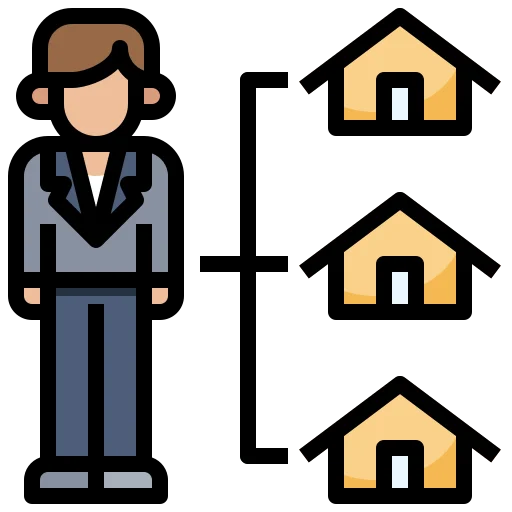Now Reading: Home loan guide for beginners: Understanding the Basics of Housing Finance
-
01
Home loan guide for beginners: Understanding the Basics of Housing Finance
Home loan guide for beginners: Understanding the Basics of Housing Finance

Home loan guide for beginners is a resource designed to simplify the often confusing world of housing finance. Whether you’re planning to buy your first home or just beginning to explore the idea, understanding how home loans work is essential. With rising real estate prices and growing financial products, knowing the basics of home loans can help you make informed decisions and avoid costly mistakes.
What is a Home Loan?
A home loan is a financial product provided by banks or housing finance companies to help individuals purchase, construct, or renovate a residential property. Home loan guide for beginners explains that this loan is usually repaid through equated monthly installments (EMIs) over a period ranging from 10 to 30 years. The property bought with the loan acts as collateral, giving the lender a legal claim to it in case of default.
Types of Home Loans
Home loan guide for beginners introduces various types of home loans available in the market:
- Home Purchase Loan – The most common type, used for buying a ready-to-move-in or under-construction property.
- Home Construction Loan – For building a house on a plot already owned.
- Home Improvement Loan – Covers expenses related to renovation or repair of an existing home.
- Home Extension Loan – For adding space or floors to an existing home.
- Plot Loan – Helps in purchasing land for future construction.
- Balance Transfer Loan – Allows switching your existing loan to another lender offering better terms.
Each type serves different needs, and home loan guide for beginners emphasizes understanding these distinctions before applying.
Eligibility Criteria and Documentation
Home loan guide for beginners points out that eligibility depends on income, age, credit score, employment status, and existing financial liabilities. Most lenders require the borrower to be between 21 and 65 years old with a stable income source.
Key documents typically required include:
- Identity and address proof
- Income proof (salary slips, bank statements, ITR)
- Property documents
- Employment details
A good credit score (usually 750 or above) increases the chances of approval and better interest rates.
Interest Rates: Fixed vs. Floating
Home loan guide for beginners highlights that interest rates come in two forms: fixed and floating. Fixed interesrates remain constant for a specific period or the entire loan tenure, offering predictable EMIs. Floating rates vary with market conditions, which can either reduce or increase the EMI over time.
Selecting between these two depends on your risk appetite and financial stability. Some lenders also offer hybrid loans that combine both types.
Loan Tenure and EMI Calculation
Choosing the right loan tenure is crucial. A longer tenure reduces the EMI burden but increases total interest paid. Conversely, a shorter tenure means higher EMIs but lower interest costs. Home loan guide for beginners advises using online EMI calculators to estimate monthly payments and plan finances accordingly.
Down Payment and Loan-to-Value Ratio (LTV)
Lenders typically finance up to 75%-90% of the property value, depending on the amount and guidelines. The rest must be paid as a down payment. Home loan guide for beginners suggests being prepared for this upfront cost, which also includes registration fees, stamp duty, and other charges.
For example, if the property costs ₹50 lakh and the lender offers 80% LTV, you must arrange ₹10 lakh as a down payment.
Processing Fees and Other Charges
Home loan guide for beginners warns that the loan amount is not the only cost. Lenders may charge processing fees, legal and technical evaluation fees, prepayment penalties (in case of fixed-rate loans), and documentation charges. It’s important to factor in these costs while evaluating loan offers.
Tax Benefits on Home Loans
Home loan guide for beginners notes that home loans come with tax advantages under the Income Tax Act:
- Under Section 80C, up to ₹1.5 lakh per year can be claimed for principal repayment.
- Under Section 24(b), up to ₹2 lakh per year can be claimed on interest payment for a self-occupied house.
These benefits help reduce the overall financial burden, making home loans more affordable.
Prepayment and Foreclosure Options
Borrowers may wish to repay their loan early either partially (prepayment) or in full (foreclosure). Home loan guide for beginners explains that most floating-rate loans have no prepayment penalties, but fixed-rate loans may carry a charge. Making prepayments when possible can significantly reduce interest costs over time.
How to Apply for a Home Loan
Applying for a home loan involves comparing lenders, checking eligibility, collecting documents, and submitting the application. Home loan guide for beginners recommends checking your credit report beforehand, maintaining a healthy financial profile, and seeking pre-approval to know your borrowing capacity.
Online platforms have simplified the process with digital applications, but offline branches still remain a preferred choice for many first-time buyers.
Common Mistakes to Avoid
Home loan guide for beginners lists some common pitfalls:
- Ignoring hidden charges
- Not comparing loan offers
- Overestimating repayment capacity
- Not reading the fine print
- Failing to plan for emergencies
Awareness and careful planning can prevent long-term financial stress.
Conclusion
Home loan guide for beginners serves as a foundational roadmap for those new to housing finance. From choosing the right type of loan to understanding EMIs and tax benefits, it equips readers with the essential knowledge to navigate the loan process confidently. Buying a home is a major life decision, and a clear grasp of how home loans work is the first step toward making that dream a reality.
























